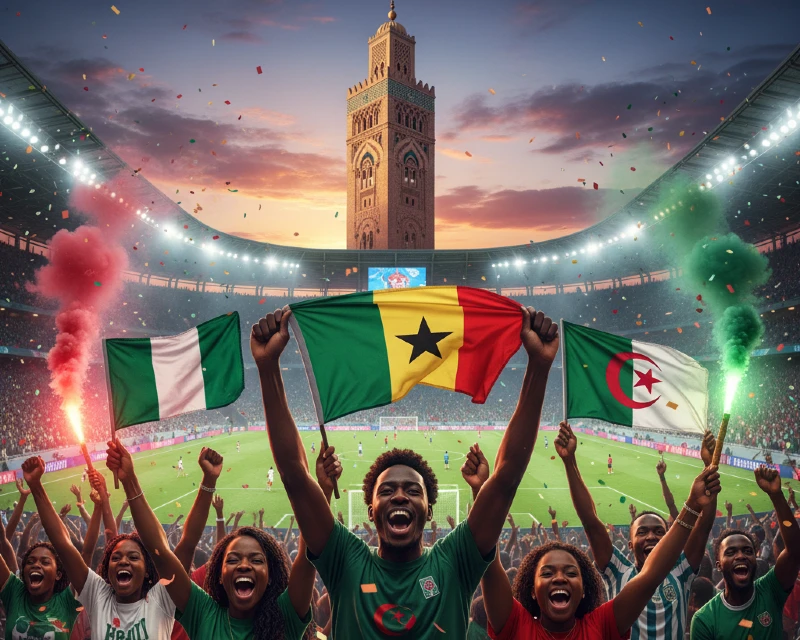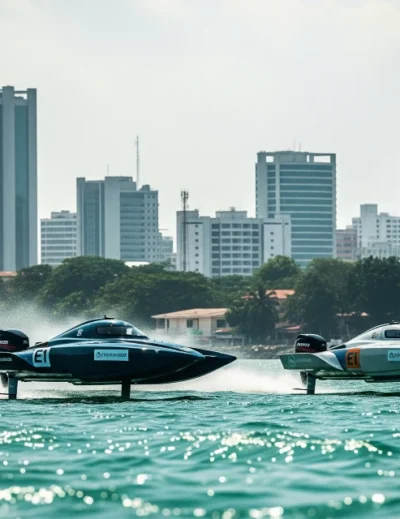
What to do and see while in Morocco for AFCON 2025
The 2025 Africa Cup of Nations (AFCON) is just around the corner, and Morocco will be buzzing with football fever. As Africa’s biggest football tournament, AFCON doesn’t just bring the continent’s best players together, it also draws passionate fans from every corner of Africa and beyond. If you’re planning to travel from Nigeria, Ghana, Kenya, South Africa, or elsewhere, you can turn your football trip into so much more by exploring Morocco’s rich culture, history, and landscapes.
The matches will be hosted across six cities: Rabat, Casablanca, Marrakech, Fes, Tangier, and Agadir. This means you have the perfect itinerary to follow your favourite team while ticking off some of Africa’s most sought-after tourist attractions.
Do you need a visa to visit Morocco?
Understanding the visa requirements is the most critical part of your trip planning. Here’s a concise breakdown to make it easy:
If you are a citizen of Algeria, Burkina Faso, Cape Verde, Gabon, Niger, Senegal, Togo, or Tunisia, you can apply for a special AFCON e-Visa through the official “Yalla” mobile app.
If your country is not on the list above, you will follow the standard Moroccan visa process. This can be either an e-Visa through the official government portal.
If this sounds confusing, don’t worry. Leryhago has processed Moroccan visas for Nigerian passport holders before and can help you figure out exactly what you need to do.
How long does it take to fly to Morocco?
The flight time to Morocco varies depending on your departure city and whether you have a direct flight or a layover. Here are some estimated flight times to give you an idea:
North Africa: Being the closest, travel takes 1-3 hours by air.
West Africa: Flights from major hubs like Lagos, Accra, or Abidjan to Casablanca can range from approximately 4 to 6 hours on a direct flight. Layovers can extend the journey significantly.
Central Africa: Flights from around 5–6 hours.
East Africa: Flights from Nairobi or Addis Ababa will typically be longer, averaging around 8 to 10 hours, often with a layover.
Southern Africa: Traveling from a city like Johannesburg to Casablanca is a much longer journey, with flight times often exceeding 12 hours, and usually including one or more layovers.
RELATED: Everything to know before travelling to Morocco with a Nigerian passport
What to see in Morocco’s AFCON host cities
When you’re not in the stadium cheering for your team, here’s how to enjoy each host city:
Casablanca
Hassan II Mosque: One of the world’s largest mosques, sitting dramatically on the Atlantic coast with the tallest minaret in the world.
Corniche Ain Diab: A breezy seaside boulevard filled with cafes, restaurants, and nightlife. Perfect for post-match relaxation.
Old Medina: Wander the narrow alleys for spices, handicrafts, and a taste of authentic Moroccan daily life.
Rabat
Kasbah of the Udayas: A peaceful UNESCO site with blue-and-white streets, sea views, and Andalusian gardens.
Hassan Tower and Mausoleum of Mohammed V: Landmarks that showcase Moroccan history and artistry.
Rabat Medina: A quieter, more laid-back shopping experience compared to the bigger medinas.
Tangier
Cap Spartel and Caves of Hercules: Stunning coastal scenery and legendary caves.
Kasbah Museum: Learn about Tangier’s fascinating mix of cultures in a former Sultan’s palace.
Tangier Beach and Port: Relax by the water, sip mint tea, or join locals for a lively stroll along the promenade.
RELATED: What to buy in Morocco
Marrakech
Jemaa el-Fnaa Square: A buzzing square with street food, performers, snake charmers, and storytellers. It’s especially lively at night.
Majorelle Garden: A cobalt-blue botanical haven once owned by Yves Saint Laurent.
Bahia Palace and Saadian Tombs: Stunning examples of Moroccan architecture and royal history.
Fez
Fez el-Bali Medina: Lose yourself in one of the world’s largest car-free urban areas. A living museum of Moroccan life.
Al Quaraouiyine University: The world’s oldest functioning university.
Tanneries of Fez: Colourful leather-dyeing pits that showcase centuries-old craft traditions.
Agadir
Agadir Beach: Long golden sands, perfect for swimming, surfing, or just relaxing.
Kasbah Agadir Oufella: Hilltop ruins with panoramic views of the city and bay.
Souk El Had: One of Morocco’s biggest markets, perfect for souvenirs and spices.









Leave a Reply